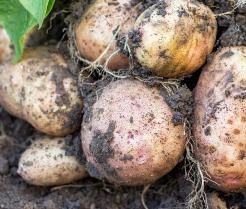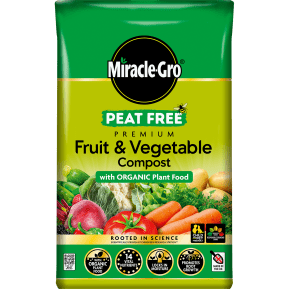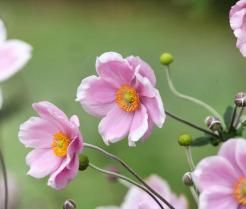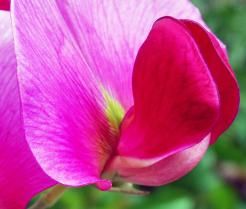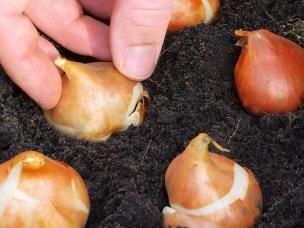February Gardening: Your Monthly Garden Guide
As the last month of winter, and frequently the coldest, you might find yourself wondering what to grow in February. It’s the end of the dormant period for many plants, so it’s often your last opportunity to plant out some perennials and fruit trees. Timing this can be tricky, as the ground is sometimes too frozen to dig. However, even on days when it’s too cold to work the soil, there’s still plenty to keep you busy as you can finish pruning plants ready for them to start regrowing in spring.
What to plant in February and other seasonal gardening tips
Hopefully over the winter you’ve found an opportunity to plan what you want to grow in the coming year but if you’re still asking yourself what to do in the garden in February, check the categories below for some ideas. There are plenty of essential February gardening jobs and you can even start sowing some of your seeds.
If you’re looking to get a head start on your vegetable garden this year, then February is a good time to start sowing seeds indoors – in a greenhouse or on a warm windowsill. It’s also a good opportunity to pick up some new fruit plants. Elsewhere there will be plenty to harvest whether you’, and you can start preparing your garden for new spring growth.
Vegetables
When choosing which vegetables to plant in February, you should focus on hardy vegetable plants that are resistant to the cold, such as cabbage and broad beans. It’s also a good time to start chitting potatoes if you haven’t already, while parsnips will be ripe for the harvest along with many types of brassicas. The weather might be cold, but there’s plenty of February gardening to be done.
What vegetables to plant in February
If we’re having a particularly mild winter, you may be able to get away with sowing broad beans and cabbages outside, but most vegetable seeds need a degree of warmth to propagate. If you want to get started on your vegetable garden early, you can sow the following vegetable seeds inside under glass – a heated greenhouse is perfect but, if you don’t have access to one, a windowsill in a warm room will do just as well. Some vegetables to consider include:
Plant seedlings of the following
Growing vegetables in February
Now is a good time to check the netting on your brassicas to make sure it’s still secure. Birds – pigeons in particular – can shred unprotected greens very quickly. Stop them getting access by weighing or pinning down the netting edges so that there are no entry points.Once you’ve done that, it’s time to start preparing for the spring. February is the ideal time of year to start chitting your potatoes (placing seed potatoes in a light, warm space such as a hallway or windowsill). This helps them to sprout before they are planted outside, giving them a head start before you start to plant them out for March. Just make sure you use certified, virus-free seed potatoes which will avoid issues later in the season .
If you have asparagus, now is a good time to add an organic, peat-free compost to the soil above each plant before it starts to produce spears.
What vegetables to harvest in February
February should provide plenty of vegetable crops, especially if you grow lots of brassica. Any of the following will be ideal for a February harvest:
- Broccoli
- Brussels sprouts
- Celeriac
- Kale
- Leeks
- Lettuce
- Parsnips
- Swede
Parsnips in particular will be full of flavour after a couple of months of cold weather. Freezing conditions bring out the sweetness in them - just make sure to harvest them on a day without frost when you can get a garden fork into the ground.
If you’re harvesting leeks, don’t forget to leave a last plant in the ground so that it flowers. Pollinators love leek flowers, and they are a large, beautiful ball shape. Once the seed head has dried out, the seeds can be saved for sowing.
It’s always a good idea to apply a mulch to the soil (at least 5 centimetres or 2 inches) after harvesting. This will help to improve the soil and protect it against weeds and bacteria – a soil conditioner or peat-free composted bark would be ideal.
Fruit
If you’re thinking to yourself, ‘can I plant fruit trees in February?’ you might be surprised at the sheer variety of species that will take to the soil at this time of year. It’s also a good time to prune any existing fruit trees you have in your garden – including apples and pears – and to do a spot of weeding in anticipation of the warmer weather.
What fruit to plant in February
A trip to the garden centre in February might allow you to pick up some end-of-season bargains. Many will be clearing space ready for spring stocks and will be keen to move out the last of their container-grown fruit plants. Any of the following fruit plants can be planted now:
These fruit trees and bushes can all be planted in February:
When buying an apple tree, remember that different trees will produce different types of apples. The four main types are cider apples, crab apples, dessert (eating) apples and culinary (cooking) apples. Choose a type that will meet your culinary needs.
Consider adding a naturally derived peat-free compost to your new plants that has been specifically formulated to support growth in fruit. Make sure the compost covers all of the roots and give it a thorough watering.
Growing fruit in February
If you didn’t quite get your fix from all of that pruning in January, then you’re in luck! There’s plenty more to be done. February is an ideal time to prune:
- Autumn raspberries - cut them all to just above ground level.
- Apple and pear trees - whilst they are still dormant and before the warmer weather arrives in March.
- Blackcurrants - remove old wood to promote good air circulation between the branches.
- Citrus plants - remove the spindly growth.
- Mulberries – remove the dead and broken branches.
- Nectarines and peaches – specifically the very young ones and where they are being trained to shape. Cut about one third from each branch, to just above a bud.
Treat any early flowering plants with an organic plant feed formulated to nurture tastier and more abundant produce.
If a cold snap is forecast (as they so often are in February) cover any apricots, nectarines, plums and strawberries with horticultural fleece. This will protect the blossoming flowers from frost and will encourage strawberries to flower earlier than usual. Remove the fleece once the weather has warmed to allow pollinators to get to the flowers.
Finally, make sure you weed around all fruit plants. In particular, look out for perennial weeds which should be removed before they have a chance to establish and form strong roots. If you have particularly invasive weeds, consider using a naturally derived weed control product.
What fruit to harvest in February
Although technically a vegetable, when it comes to the kitchen, rhubarb is usually treated as a fruit. Easy to grow, rhubarb crowns need to be divided every few years to reinvigorate them, so ask your neighbours to see if someone you know is planning to divide their clump.
Remember - only rhubarb stalks can be eaten; the leaves are highly poisonous and should be removed and composted.
Herbs and spices
If your herbs and spices cabinet is starting to look bare then you’re in luck, as there are plenty of herbs that can be picked at this time of year. When it comes to choosing what herbs to plant in February, those that are leafy and green tend to be most suitable.
What herbs to plant in February
Seeds of the following herbs can be sown from February through to early spring. All of them will produce leafy green growth which can be harvested later in the year:
Plant seedlings of the following
There are three main types of parsley. Flat-leaved parsley has a strong flavour, curly-leaved parsley looks pretty, and Hamburg parsley has a flavoursome root. All of them can be grown from seed and planted outside as soon as the last frosts are over.
Coriander will usually bolt in warm weather. Bolting means that the plant has started to flower and produce seed. Flowers, seeds and leaves of coriander can all be eaten. Alternatively, you can allow the green seed heads to dry out, harvesting them when they go brown and resowing them for a new batch of coriander plants.
Basil is a tender plant and should be sown and kept indoors until all risk of frost has passed. It is also a favourite of slugs and snails. It will grow indoors as happily as it will in the garden, so if you have room on the kitchen windowsill, you may find it easier to grow there instead.
Growing herbs and spices in February
Alongside planting and harvesting, there are some maintenance tasks which should be undertaken with herbs early in the year.
If you have rosemary or lavender, monitor the plants for rosemary beetles (you’ll know them by their metallic-looking shell) and remove them on sight before they have a chance to make a meal of your plants.
Check that the containers or barriers around lemon balm and mint plants are intact. They will both go rampant if their roots are not contained. Although they’re beneficial for the local wildlife, they will quickly crowd out other plants. You should also consider repotting any herbs that are in containers and adding in some new peat-free compost to provide a fresh nutrient boost. This only needs to be done every two to three years, or when you notice the plant has lost its vigour.
What herbs and spices to harvest in February
Perennial herbs and those which are reasonably frost-hardy, such as coriander and parsley, can be picked in February. These include:
Whether you want to add some plants and shrubs to your borders, inject a colourful new display into your rose garden, or plant some flowers and bulbs inside, you might be surprised by just how many options there are. Even if you opt not to add any new specimens to your garden, there’s plenty of pruning to be done in #february – especially after your plants have flowered.
Plants and shrubs
If you’re considering what plants to grow in February in order to bring some new life to your winter garden, you might be surprised to learn that you’re not short on options. If you’re not planning to introduce any new additions, there’s still plenty to do with pruning and maintenance a high priority for plants and shrubs in February,
What plants and shrubs to plant in February
There are plenty of perennials and shrubs which can make a nice addition to your garden in February. Some ideal options include:
• Acanthus
• Cornus (dogwood)
• Echinops
• Hamamelis (witch hazel)
• Hardy geraniums
• Ilex (holly)
• Japanese anemone
• Lupins
When you’re sowing new plants and shrubs, remember that if you take the time to prepare the area properly, they’ll make a beautiful addition to your garden for years to come. Before planting them, make sure you dig in a high-quality peat-free compost to the area where you want them to grow. Water the soil before and after planting and mulch the soil around the plant with bark or a compost to prevent weeds, and improve the soil structure and temperature around the roots among other mulching benefits.
Growing plants and shrubs in February
If you have any winter flowering plants and shrubs in your garden (arrowwood, witch hazel, or winter honeysuckle, for example) then you should expect to see them putting on a colourful display during February. Make sure you remember to give them a prune once they’ve finished flowering.
You’ll likely find that there are a few other varieties of plants and shrubs in need of a prune in your garden in February. It’s the perfect time of year to prune the following plants:
- Buddleia
- Clematis – you can prune any species of clematis that doesn’t flower through the winter.
- Cornus – cut to ground level.
- Hardy geraniums
- Hellebores - remove browning leaves.
- Hydrangea
- Ilex (holly)
- Mahonia
- Sedum
- Winter jasmine
- Wisteria – this needs to be pruned twice a year for it to remain healthy. Follow our guidance on pruning Wisteria to ensure that your hard work promotes flowering growth later in the year.
For your longer established shrubs, it’s a good opportunity to divide them if they’re congested. You can either replant the divided plant in another part of your garden or give them to a friend or neighbour for a new lease of life.
Finally, if perennial weeds have taken hold in your borders, February is a good time to tackle the problem. You can gently lift shrubs to wash their roots and remove any trace of weeds from the border area. Consider using a naturally derived weed control if the problem is persistent.
Recommendation: When pruning, remember to keep any sturdy twigs or branches to use as supports elsewhere in your garden.
Roses
Can you plant roses in February? The answer is yes! February is a great time to plant bare root roses if you want to make a head start on your summer garden, but you should wait until spring to plant any potted roses. If you have established roses in your garden, now is a good time to give them a comprehensive prune in time for a colourful burst of summer colour.
What roses to plant in February
As you’re turning your calendar over to February, you’ll probably be starting to look forward to spring; planning what plants to add to your garden and making a list of things to do. When it comes to roses, you can plant any type of bare root rose now, as long as the ground is not waterlogged or frozen. If it is, you might be better off waiting until March.
Bare-root plants have been grown in the ground. They are usually stronger plants than those grown in a pot, as the root systems have been able to develop unfettered by the confines of a container. They are also often cheaper with a wider range of varieties to choose from.
When planting rose bushes, remember to dig a hole twice as large as the root ball. Fill the hole with a mixture of soil and an organic, peat-free compost specially formulated for the fast rooting of rose bushes.
Growing roses in February
If you planted out roses last year, now is the opportune time to prune them to remove unwanted growth.
For established roses, remove dead and damaged branches, and any which are touching other branches. Particular varieties of rose have additional pruning needs which can be undertaken in February:
- Floribunda roses – Cut back the strongest growing branches to 30cm (12 inches) from the ground.
- Hybrid tea roses – Cut back the strongest growing branches to 10-15cm (4-6 inches) from the ground.
- Patio and miniature roses – Remove twiggy growth, along with leggy growth where it is out of keeping with the main shape of the rose. You should also reduce the main stem by about a third.
- Groundcover roses – First, cut back the strongest growing shoots by about a third . Next, you should remove any spindly growth which is spoiling the intended shape of the plant, and cut back side shoots to within three buds of the branch.
Once you’ve finished pruning your roses, there’s just a little bit of maintenance left to perform – whether that’s for newly planted roses or established displays. The most important thing is to apply a mulch of organic, peat-free compost to all of your rose bushes, providing a suitable source of nutrients and helping the soil to retain moisture. You should then check any supports, and replace ties that may have been damaged over winter.
Flowers and bulbs
When it comes to choosing which flowers to plant in February, the biggest factor will be whether you’re able to sow seeds under cover. With a little TLC, there are plenty of seeds that will thrive in these conditions during February, but don’t worry if you don’t have access to a warm environment – there are also a variety of bulbs that will flourish at this time of year.
What flowers to plant in February
Bulbs that can be planted in February include:
• Agapanthus
• Alliums
• Begonias
• Eucomis
• Galtonia (summer hyacinth)
• Liatris
• Lilies
As a general rule of (green) thumb, bulbs should be planted to at least three times their depth. This means that a 2-3cm (1 inch) long bulb should be planted 6cm (3 inches) deep. You should also use a specialised compost for containers to give plants the perfect start.
Provided they can be sown under cover (in a warm environment such as a greenhouse, windowsill or electric propagator), the following seeds are ideal for sowing in February. To aid with germination and help them to put down healthy roots, consider using a peat-free compost specially formulated for young plants:
• Antirrhinums (Snapdragons)
• Chrysanthemums
• Laurentia
• Lobelia
• Cosmos
• Sweet peas
• Salvias
You can also begin to plant out some spring hardy bedding, such as:
• Primroses
• Erysimum (Wallflowers)
• Forget-me-nots
Finally, if you have any dahlia tubers, these should be encouraged out of dormancy now. Plant them into an organic, peat-free compost and keep them at 10°C or warmer.
Recommendation: Create an extended display in a pot by planting different sized bulbs at different depths. Make sure you choose an appropriate environment for your bulbs and consider stocking up on some organic plant feed for when they flower in early spring. Read our article about planting bulbs and tubers to find out more.
Flower and bulb maintenance in February
Even if you decide not to introduce any new seeds or bulbs into your flower garden this February, there are still a few bits of basic maintenance to keep on top of.
If you have snowdrops and winter aconites, you’ll need to divide these and move the divided clumps to new areas of the garden to increase the spread of these beautiful early flowering plants.
Any winter-flowering pansies can be deadheaded, and you should cut off the flower stalks from any amaryllis once they have finished flowering. Similarly, you can cut the flowers from daffodils, tulips, and snowdrops to bring them indoors to make a colourful display in your living room or kitchen.
When it comes to less glamorous jobs, don’t forget to wash your seed trays and pots, and order fresh peat-free compost, ready for any spring sowing.
February lawn care
Unless we have a particularly warm month, February lawn maintenance is likely to be relatively low. You can mow it at your mower’s maximum cutting height if you start to notice growth but generally it’s advisable to leave the first cut of the year until March, and remember to avoid mowing when the grass is wet or frosty.
February lawn care
You can also take this opportunity to start removing any perennial weeds but don’t forget the golden rule of winter: if it’s frosty or snowy, stay off the lawn. This can cause damage and scorching to your grass.










